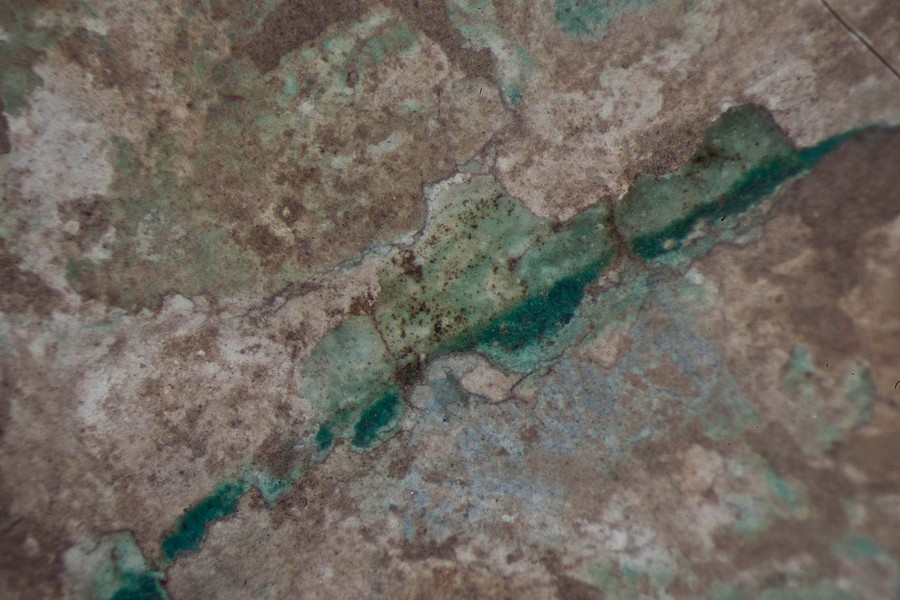Capital of palm column
Summary
The 87 cm-high capital comes from a column in the palace of the pharaoh Apries in Memphis. Apries was a member of the 26th Dynasty and reigned 589 – 568 BCE. At first sight the capital appears to bear traces of green paint, but technical examination provides a new and exciting insight into the painting processes of the past. Surface microscopy has documented that the capital was initially painted a greenish-blue colour to be partially covered in gold leaf at some later point in time.
Description of object
A complete monolith Capital represents a rosette of palm leaves which are bound around the top end of the colum’s shaft and with well preserved colour. The capital is said to have been found in ‘one of the halls’ in the Palace specified in the caption to the published illustration as ‘north chamer’, but it is not clear exactly which one.
Choice of methods
Visual examination
- Macroscopic
- Microscopic in situ
Technical imaging
- UV
- VIL
Sampling
- Cross section
- Microscopy
- EMP
- XRF
- FT-IR
- GC-MS
Technical imaging
UV-FL The green-colour appears brownish under UV-light and are composed of an absorbent and non-fluorescing material whereas the blue bands appears completely dark. * VIL* ………………….VIL-imaging reveals extensive luminescence properties of Egyptian blue. A regular distribution of relatively uniform grains shining bright white are observed on the main part of the fragment whereas a more dense concentration the leaf ornamentation appearing green in tungsten light. There is microscopy-derived evidence that the blue pigment exists only in minute amounts mixed with various pigments to obtain tonal variations In this context it is notable that µ-XRF does not reproduce the same picture but depicts the content of Cu spatially restricted to the green
Bibliography
C. Brøns, K. Lund Rasmussen, M. Melchiorre di Crescenzo, R. Stacey, A. Lluveras-Tenorio (2018) Painting the Palace of Apries I: Ancient binding media and coatings of the reliefs from the Palace of Apries, Lower Egypt, Heritage Science 6:6 “https://heritagesciencejournal.springeropen.com/articles/10.1186/s40494-018-0170-9”:
S. Hedegaard, T. Delbey, C. Brøns, K. Rasmussen, Painting the Palace of Apries II: ancient pigments of the reliefs from the Palace of Apries, Lower Egypt. Heritage Science. 7 (2019), doi:10.1186/s40494-019-0296-4.
Bagh, T. (2011). ‘Finds from W.M.F. Petrie’s Excavations in Egypt in the Ny Carlsberg Glyptotek’ in Meddelelser fra NyCarlsberg Glyptotek. No. 13 Copenhagen: 42
M. Jørgensen (2009), Catalogue Egypt IV Late Egyptian Sculpture 1080 BC-AD 400. Ny Carlsberg Glyptotek, Copenhagen, cat. No. 26.2.: 96
- ÆIN 1045
- Architectural element
- 26th Dyn 589-570 BC
- Egypt: Early Dynastic Period
- Limestone
- W.M.F. Petrie’s excavations at the north end of Memphis unearthed in 1909 remains of the royal palace of Apries. That same year the Glyptotek in Copenhagen received a number of painted limestone relief fragments belonging to the Palace.
- H 85 cm D 75/44 cm














